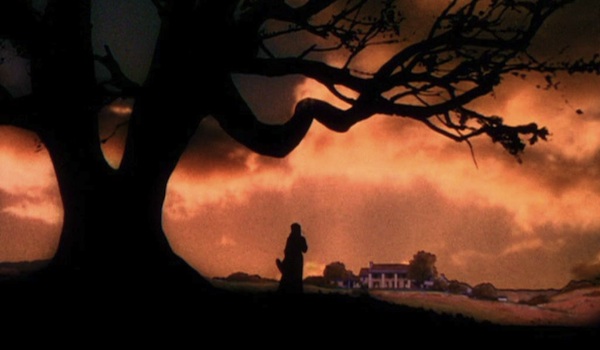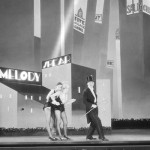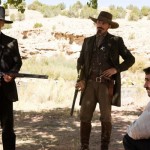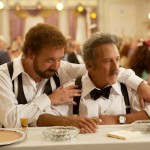Gone with the Wind Review
How do I go about reviewing a film that feels so much like two separate films, especially one as classic and timeless as Victor Fleming’s (or is it David O. Selznick’s) Gone With the Wind? Separated by an intermission, Gone With the Wind‘s two halves couldn’t be more different, both in content and quality. The first two hours are flat out brilliant. It’s an authentic and tremendously interesting look at a culture that died long ago with the hundreds of thousands of Confederate soldiers who fought to defend it. The second half, while good enough at the start, fails to even remotely capture the magic of the first half with its romantic entanglements and overblown melodrama. It just keeps going for what seems like hours until finally reaching its conclusion with a whimper instead of a bang. Still, I’m recommending it based on the strength of the first half and the good performances, but not without serious misgivings.
America is on the brink of war with itself, and in Georgia, spoiled Southern belle Scarlett O’Hara (Vivian Leigh) cares about nothing besides the boys in her life. She wants them all to herself, especially the one she can’t have, Ashley Wilkes (Leslie Howard). Ashley is about to get engaged to the sweet and extremely selfless Melanie Hamilton (Olivia De Havilland), but he secretly has feelings for Scarlett as well. Still, a life with Melanie would be more stable and comfortable than one with the fickle and fiery Scarlett. Also in the mix is Rhett Butler (Clark Gable), a charmer from Charleston. He’s the only one who can stand toe-to-toe with Scarlett, and eventually, the two prove to be quite a match. But everything is put on hold when the war finally breaks out.
The war proves to be devastating to the South in many ways. Many lives are lost, including friends and family of Scarlett and company. Carpetbaggers move in and take advantage of what’s left. But perhaps most importantly, the Southern way of life is completely disrupted. Ladies like Scarlett are forced to work in the fields just to make enough to survive, but even that’s not enough. Food is scarce, money is worthless, and good-paying jobs are nowhere to be found.
That sums up most of the major points of the first half and sets in motion the second. When we rejoin the characters after the intermission, Scarlett is a wily survivor. It’s a fascinating and well-done transformation, but it is abandoned shortly for the self-absorbed Scarlett of the pre-War era. When she finally gets together with Rhett, she becomes extremely dislikable, not so much because of who she is, but rather because it seems she hasn’t learned anything from the hell the Yankees put her through.
Another big reason the second half fails is the chemistry between Rhett and Scarlett. Their scenes in the first half of the film sparkle, but married Rhett and Scarlett go together like oil and water. They fight about anything and everything, and two hours of that does not make for an enjoyable or rewarding watch.
With that said, the acting is pretty strong across the board. The chemistry problem between Rhett and Scarlett must be a problem of the screenplay because Leigh and Gable are very strong. At the time of the film’s release, Leigh was an unknown but she holds her own against the established star opposite her. Scarlett is a fully realized character (she better be in the four hours we spend with her). She’s got a lot of flaws, but she still captivating to watch. Gable’s Rhett isn’t your typical hero. At the beginning of the film, many view him as a traitor and a coward, but he just marches to the beat of his own drum.
As far as supporting work goes, Howard is solid enough as Ashley, although he isn’t given a lot to do (despite the time he spends on screen). De Havilland is quite good as Melanie, probably the most sympathetic character in the film. She’s a good wife and friend all the way through, which is more than can be said for most of the characters populating the film. Probably the best performance, however, was that of Hattie McDaniel as Mammy. McDaniel was the first African-American to win an Oscar for acting, and it was well-deserved. She steals every scene she is in, and provides us with a character on whom we can count to be consistent (as opposed to the waffling of Rhett and Scarlett in the film’s final hour or so). I’ll also mention Thomas Mitchell’s work as Scarlett’s father, if only to point out the incredible year the man had (he also appeared in such 1939 classics as Mr. Smith Goes to Washington and Stagecoach, for which he won an Academy Award).
As well acted as the film is, it’s chief strength might be in how incredible it looks. When compared to other films of the 1930s and 1940s, it’s astonishing how beautiful Gone with the Wind is. The overall photography and use of color and light are magnificent, and some individual shots are haunting (such as the one of the thousands of wounded Confederate soldiers on the streets of Atlanta).
Would I recommend Gone With the Wind to anyone? I’m not sure. If you have four hours to kill, you might be better served watching two shorter, better paced movies. This one falls into my Lawrence of Arabia category of good but vastly overrated “masterpieces.” It has a lot to offer, but quite a few flaws. Any true cinephile must see it; it’s one of those films. So watch it, but do it at your own risk.
















